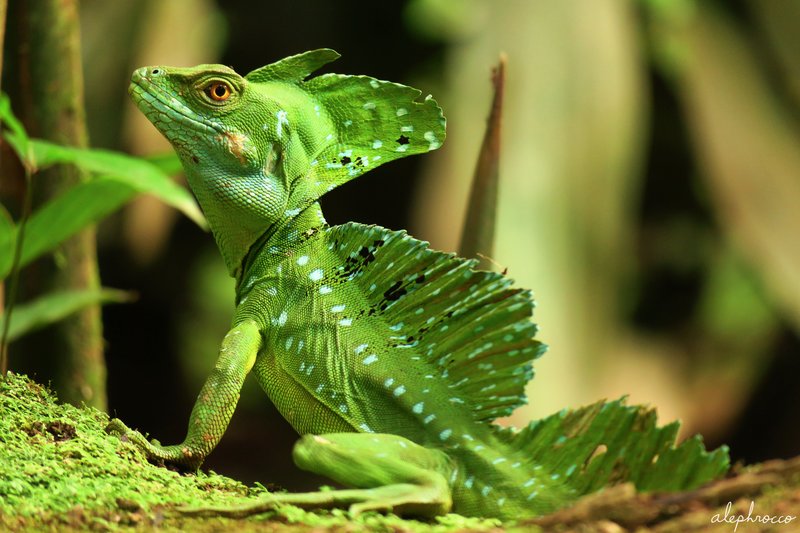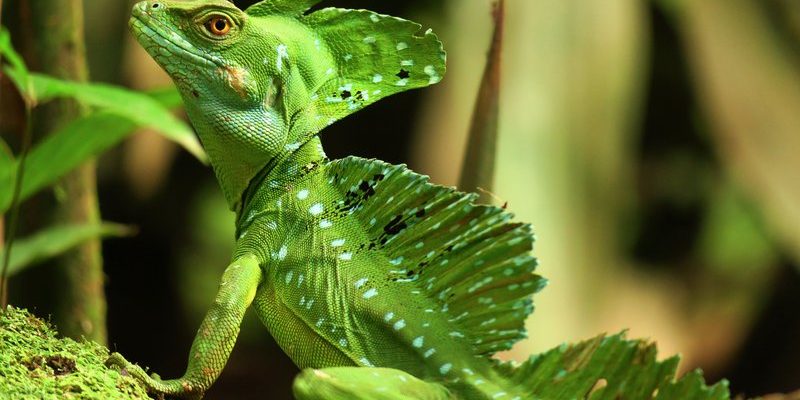
Basilisk lizards are a true testament to the wonders of evolution. Their ability to glide through trees and dash across water makes them intriguing subjects of study for reptile enthusiasts and casual observers alike. If you’re curious about the habitats of these lizards and want to know more about their global presence, you’ve come to the right place. Let’s take a closer look at where basilisk lizards are found and what makes each location special.
Understanding Basilisk Lizards: An Overview
Before diving into their habitats, it helps to know a little about basilisk lizards. These reptiles belong to the Ctenosaura genus and are found primarily in Central and South America. They come in several species, each varying in size and coloration. The green basilisk, known for its vivid green scales and long crests, is perhaps the most recognized. But regardless of species, all basilisk lizards share some fascinating characteristics.
Basilisk lizards are often associated with lush, tropical environments. They thrive near water sources, which is essential for their survival. Their unique adaptations help them escape predators and navigate their surroundings. Imagine being able to sprint across the surface of water or leap from branch to branch with ease! That’s just a day in the life of a basilisk.
Where Do Green Basilisk Lizards Live?
The most famous of the basilisk lizards is the Green Basilisk (*Basiliscus plumifrons*). These lively creatures are primarily found in the rainforests of Central America. Their range extends from southern Mexico, through Guatemala, and into parts of Honduras and Costa Rica.
These lizards prefer wet, humid environments, often residing near rivers and streams. The dense foliage of the rainforests provides plenty of cover from predators and helps them regulate their body temperature. They’re often seen basking on branches or darting across the water’s surface, perfectly showcasing their amazing skills.
In Costa Rica, for instance, you might catch a glimpse of a green basilisk darting across a stream in the early morning. They are more active during the day, making it easier for nature lovers and birdwatchers to spot them in their natural habitat.
Exploring the Habitat of Brown Basilisk Lizards
Next up is the Brown Basilisk (*Basiliscus vittatus*), often found in similar regions but with a slightly broader range. These lizards inhabit areas stretching from southern Mexico to the northern parts of South America, including Colombia and Venezuela.
The brown basilisk prefers slightly drier environments compared to its green cousin. It can often be found in open woodlands, plantations, and even suburban gardens, showcasing their adaptability. They still seek proximity to water sources but are more likely to be found on the ground than in trees.
You might be wondering why these lizards can thrive in such diverse habitats. It’s all about their *versatility*. The brown basilisk uses its agile body to camouflage itself in various environments, making it an adept survivor even in altered landscapes.
Distribution of the Spiny-Headed Basilisk
Another notable species is the Spiny-Headed Basilisk (*Basiliscus plumifrons*). Unlike its green and brown counterparts, this lizard has a unique spiny crest that runs along its back. You’ll typically find these lizards in the warm, humid areas of Central America.
Their range mainly covers regions in Nicaragua to Panama. They thrive in lowland forests and are often located in areas with abundant vegetation. Just like other basilisk lizards, they need moisture in their environment, which is why they prefer areas near ponds, rivers, and swamps.
If you’re exploring the jungles of Panama, keep your eyes peeled! Spiny-headed basilisks love to sunbathe on rocks or branches close to water, and you might see them scampering off with lightning speed when approached.
The Role of Habitat Preservation
As you can see, basilisk lizards are specific about their surroundings, preferring lush, humid environments close to water. Unfortunately, habitat destruction poses a significant threat to their populations. Deforestation for agriculture, urban development, and illegal pet trade has led to a decline in their natural habitats.
Here’s the thing: protecting these lizards means preserving their environments. Conservation efforts focus on maintaining the delicate balance of ecosystems where these creatures live. By supporting wildlife reserves and eco-friendly tourism, we can help ensure that basilisk lizards and their habitats are safeguarded for generations to come.
It’s also essential to educate others about these remarkable reptiles. The more we know about them, the more we can advocate for their protection.
Basilisk lizards are truly remarkable creatures that exemplify the beauty of nature. Their homes, ranging from the lush rainforests of Central America to the moderately humid areas of South America, showcase the diverse habitats these lizards occupy. Understanding where basilisk lizards are found adds to our appreciation of them and highlights the importance of preserving their environments.
With their ability to run on water and engage in impressive acrobatics, basilisk lizards continue to captivate the hearts of wildlife enthusiasts worldwide. As we protect their habitats, we’re not just saving a species—we’re preserving the magic of our planet’s biodiversity. So, the next time you’re reading about fascinating reptiles or planning an adventure in Central or South America, keep basilisk lizards in mind! They are a reminder of the incredible wonders that exist in our world.

